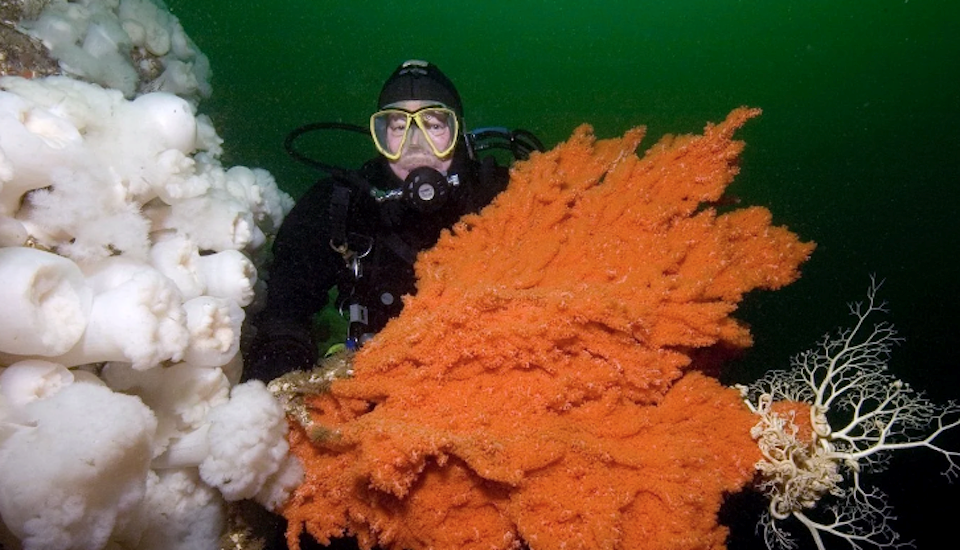The fate of a rare and splendid coral garden in a remote B.C. inlet is still on the line pending a decision by the federal government to establish interim protections before the fishing season launches this spring.
However, the First Nation and conservationists striving to protect the trove of large orange coral fans are more optimistic than they were last spring when Fisheries and Oceans Canada (DFO) failed to put a fishing moratorium in place to protect the fragile ecosystem.
The Mamalilikulla First Nation (MFN) declared their intention to establish an Indigenous Protected and Conserved area (IPCA) in their territory in Knight Inlet last year. The proposed Gwa̱xdlala/Nala̱xdlala IPCA includes Hoeya Sound, which shelters a unique hot spot of shallow corals, sponges and other endangered species sensitive to bottom-contact fishing activities.
The Mamalilikulla First Nation and DFO have managed to establish a positive dialogue around the IPCA, and discussions continue about the protection and management of Hoeya Sound, said Mamalilikulla Chief Coun. Winidi, or John Powell.
DFO hasn’t informed the Mamalilikulla yet about when any fishing closures might come into effect, Powell said, adding he’s aware DFO is holding discussions with fisheries about potential closures for the upcoming season.
“There are many checkboxes that DFO has to deal with in working towards protection of the site, so we understand their difficulties in providing a specific date for closure,” he said.
“However, we’re confident that with our interests now aligned, and given [Ottawa’s] recent COP15 commitments to land and marine protection, we’ll see an accelerated process."
In addition to the federal government’s promise to protect 30 per cent of Canada’s lands and waters by 2030, DFO also released a draft plan for a vast network of marine protected areas along the B.C. coast, which is expected to include the Gwa̱xdlala/Nala̱xdlala coral and sponge population.
Marine zoologist Neil McDaniel, who has been pushing DFO to protect the area for a decade, is both hopeful and anxious about the marine garden’s future.
“It’s good news they’ve committed to protecting the area, but it’s a bit watered down because there's no definitive timeframe,” he said.
Hoeya Sound features unusually large red tree corals, or Primnoa pacifica, the biggest stretching two metres across and 1.5 metres high, the professional diver, filmmaker and naturalist said.
The fragile marine ecosystem is easily damaged by heavy prawn or crab traps and ropes or other fishing gear that hit the seabed, he said, noting DFO’s own research suggests the biodiversity hot spot merits protection. The aquatic sill or marine shelf the garden sits on covers only a small portion of Knight Inlet, so it wouldn’t compromise fisheries in a big way in Knight Inlet, he said.
While DFO may need time to dialogue with commercial fisheries, every year without protection endangers the corals, which can take a century to grow to their current size.
“If we let this slide this year again, we risk losing more coral fans,” McDaniel said.
“It would just be nice to hear DFO say out loud: We will not allow commercial fisheries in Hoeya Sound in 2023.”
The DFO did not respond to Canada National Observer about if it intends to suspend fishing in the Hoeya Sound before the prawn or crab fishing season gets underway in April or May.



